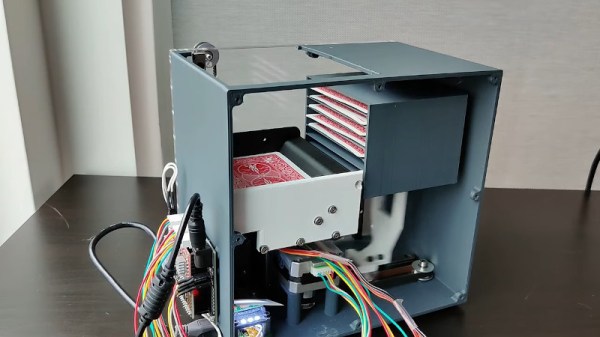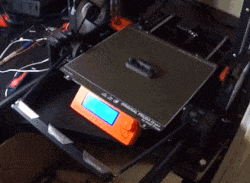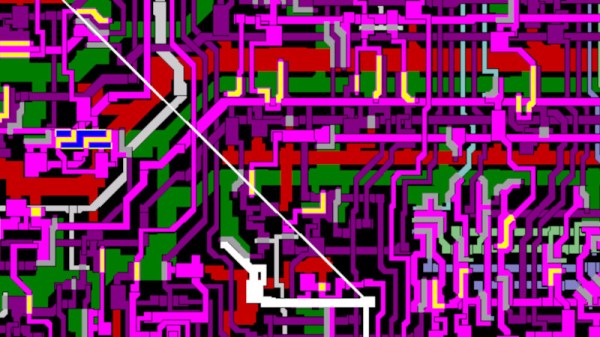If you’re playing Texas Hold’em or other card games with a small group, you may get tired of shuffling over and over again. [3dprintedLife] was in just such a position, and realized there were no good automatic card shufflers in his budget. Instead, he elected to build one, and put in some extra functionality to corrupt the game to his whims.
The mechanicals of the machine took much development, as accurately handling and dispensing cards is a challenge, particularly with the loose tolerances of 3D printed parts. After developing a reliable transport mechanism, it was more than capable of shuffling a deck well with some basic commands.
However, the real magic comes from installing a camera and Raspberry Pi running OpenCV. This is capable of reading the value and suit of each card, and then stacking the deck in a particular order to suit the dealer’s wishes. It’s all controlled through a web interface and is capable of creating guaranteed wins in Blackjack and Texas Hold’em. Files are on Github for those eager to delve deeper into how the machine works.
The mechanism does such a beautiful job of shuffling, that your friends may not even notice the ruse. It goes to show that you should always have your wits about you when gambling with the aid of machines. Of course, if you wish only to create havoc, this Lego card machine gun may be more your speed. Video after the break.
[via Reddit]
Continue reading “Raspberry Pi Shuffler Is Computerized Card Shark”

















